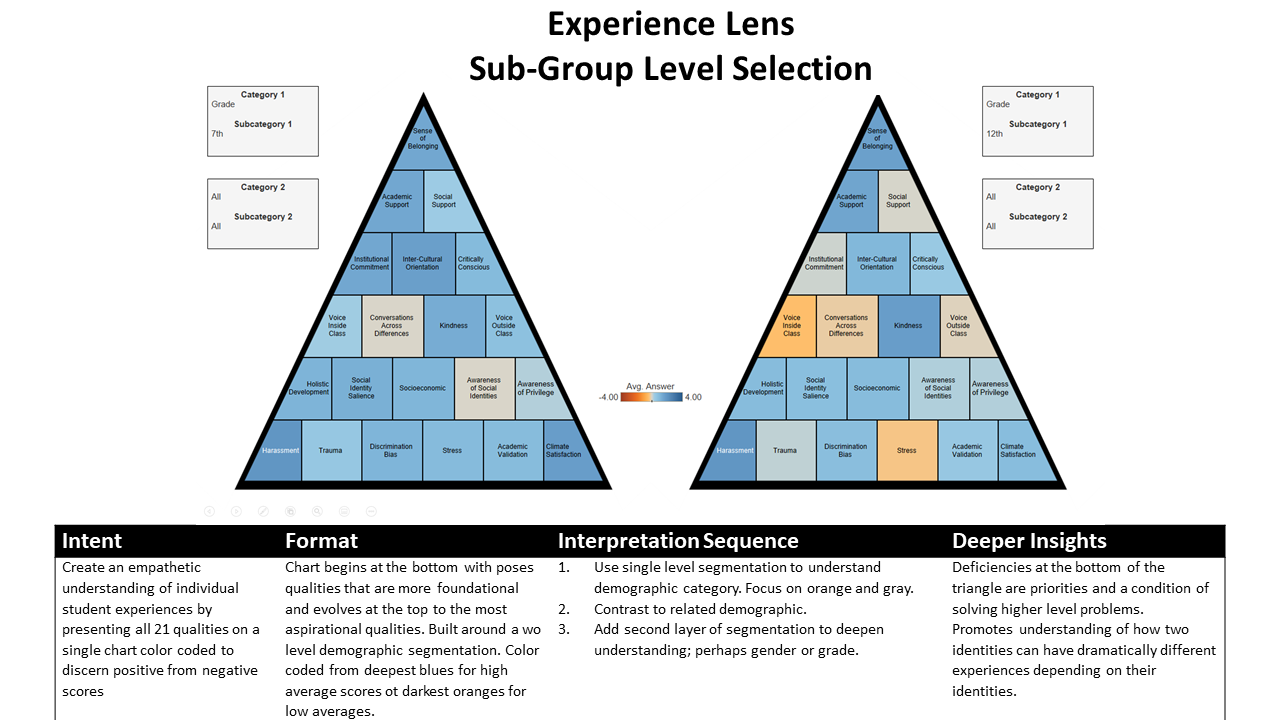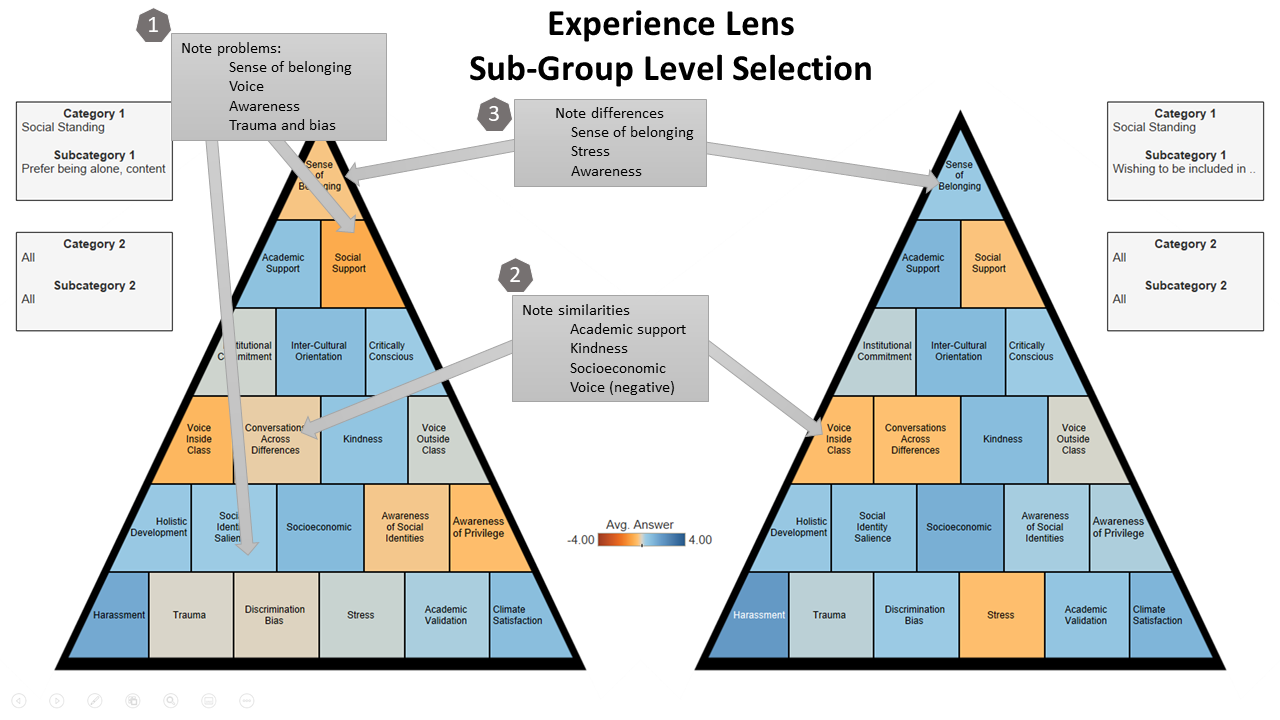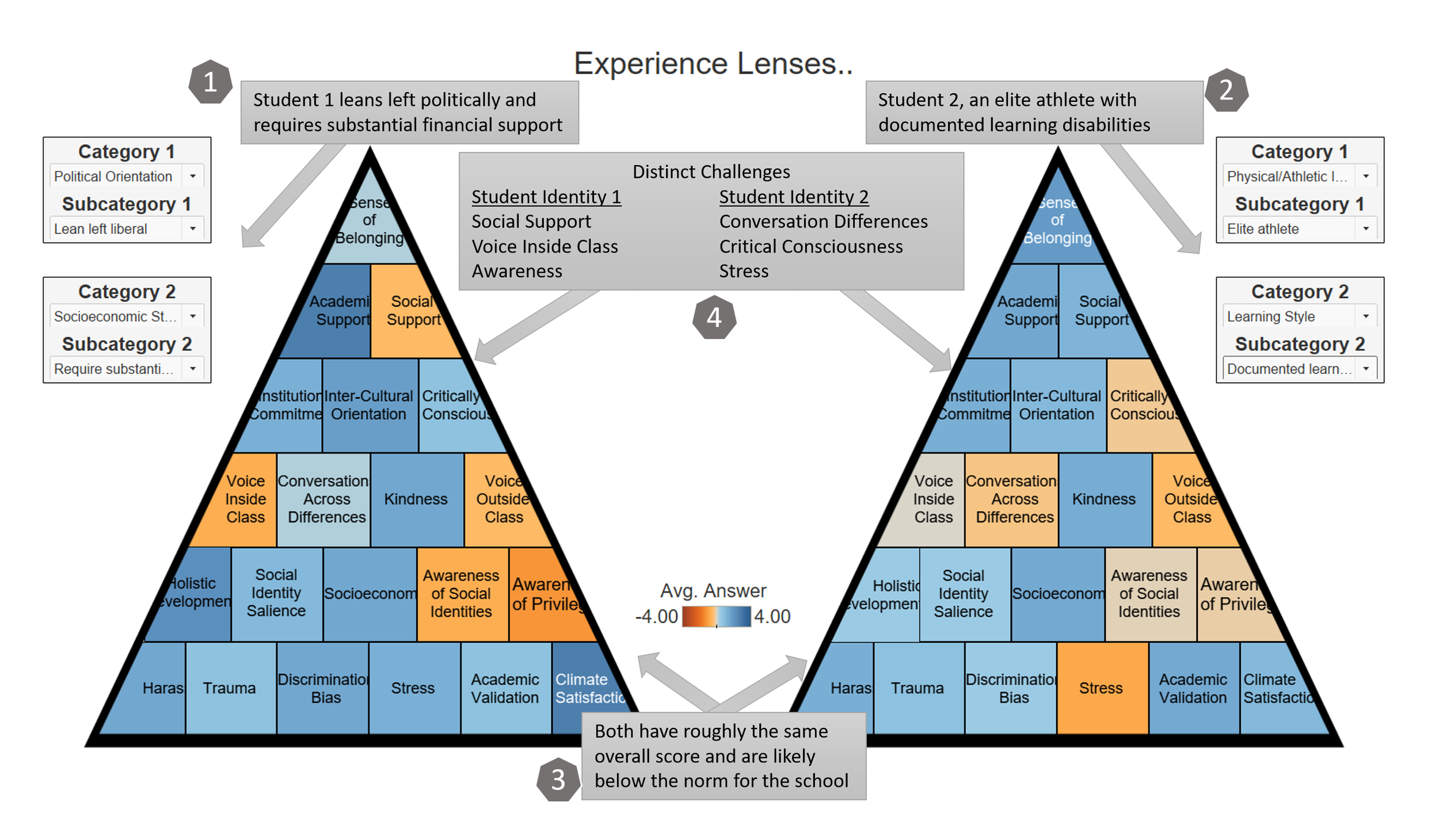Inclusivity Index Themes
Questions and Objectives
Which identities are most influential in defining experience?
Create a tool that contrasts student experiences based on their feedback across the full range of school qualities.
To better empathize with students, can we contrast the school experiences by a student’s chosen combination of identities?
Define the critical qualities that can help move specific identities to the highly satisfied and included experience space.
Reduce the magnitude of differences in support and risk factors across identities.
The “Experience Lens” is a favorite tool for school communities as it enhances the ability to empathize with students of all identities. The tool places all qualities on a single display and color codes them by the average score of the selected student demographic subgroup. The qualities are arranged in a hierarchy with foundational qualities at the bottom and the most prominent aspiration, Sense of Belonging, at the top. This organization allows users to think through priorities, focusing on the lower-level challenges as a necessary building block for the upper echelons.
Foundational qualities are defined as entry-level dimensions of the community that ensure the authenticity of all other qualities. Prime foundational qualities include Trauma, Discrimination and Bias, and Stress. The theory is that without an acceptable demonstration of these characteristics, the school community cannot provide a higher-level experience. As you move up the hierarchy, the focus turns to effective dialogue, then subject matter and support, and finally humanistic aspects and awareness. Mastery of all ensures that those who sense they belong, have a strong understanding of why it is and how this is important.
The logistic regression “Support Risk Factor” analysis investigates the same theme by focusing on those students that produce Overall Scores in the negative or relatively low range. This analysis highlights the demographic subcategories most likely to drive a low score and quantifies the advantages – risks associated with each identity. This output gives an alternative quantified perspective on how identity affects student experiences and perspectives.
Users apply the Experience Lens construct to find specific quality dimensions impacting each identity by changing selections of subcategories within a demographic. Additionally, the tool contrasts the differences between two students as they experience the school from distinct identities.







